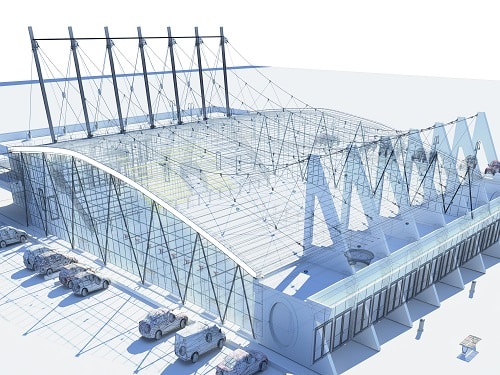Home / 6D BIM Modeling Services To Set Long-Term Financial Goals
- Author : Devashish Sharma
- Benefits of BIM
Read the latest blogs on 6D BIM modeling software, virtual technologies, 3D BIM modeling, and construction technology.
The full lifecycle of a built- asset is increasingly a concern for many building and construction companies. 6D in BIM is a great solution to manage the lifecycle of a built asset.
Nowadays, setting expectations of facility management teams to produce reliable revenue and to set long-term goals for the company, has become a common practice within organizations.

It is interesting to note that planning, design, and construction contribute only 5% to the lifecycle processes of a construction project; whereas facility management contributes to the remaining 95%.
The use of virtual technologies in the construction industry provides proactive insight into critical systems. It allows facility managers to model its effects to forecast future renovations and lifecycle processes.
Using virtual technologies such as 6D in BIM streamlines lifecycle processes and helps the facility management teams manage assets more effectively.
4 Ways In Which Using 6D In BIM Is Helping Organizations :
1 – As-Built Information For Future Maintenance
A 6D BIM Modeling for facility management provides instantaneous information of facilities components to facility managers. It helps them to track the minute details for generating a comprehensive plan of action for future renovation and maintenance.
2 – Promotes Sustainable Practices And Energy Efficiency
Integrating equipment and sensor details into the BIM model enables facility managers to record energy usage. This information is predominant for making strategic decisions, which results in controlling carbon footprints and energy wastage.
This will increasingly become the number one non-financial priority for asset owners in this decade.
3 – Financial Forecasting
6D in BIM improves the financial forecasting processes associated with future maintenance.
The component’s critical information is stored in a digital work environment, helping cost managers to forecast potential risks and to make on-time decisions.
4 – Managing Operational Costs
The virtual technologies have enabled 3D BIM Modeling companies to integrate multi-disciplinary Revit models into one single central model. The central model can be accessed on cloud-based software.
The central model created using 6D in BIM contains information such as product details, warranty, purchase costs, etc. of various different components, helping decision-makers to predict long-term operational costs and maintenance .
Why Asset Tagging Is A Great Feature?
The traditional methods of manually accessing stored data through piles of documents are almost obsolete. The facility managers often find it difficult to locate and make sense of the data; which is critical for making the long-term decision of a particular asset.
Asset tagging in the 6D BIM for facilities management makes it simple for FMs to access the data with several other benefits:
- Avoiding Piles of Documents: Asset tagging integrates the information of various elements of a building into a single model, making it easier for facility managers to easily find the documentation.
- Access to Critical Information: The hyperlinks allow facility managers to access critical information such as; product information, warranty details, expiry dates, asset identity, etc.
- Unambiguous Identification: Asset tagging allows the FMs to allocate distinct identification hyperlinks to different elements of the Revit 3D models.
Share Via :
Get in Touch with us for BIM Outsourcing Services
Stay up to date with latest BIM trends, benefits of BIM and thought leadership articles

